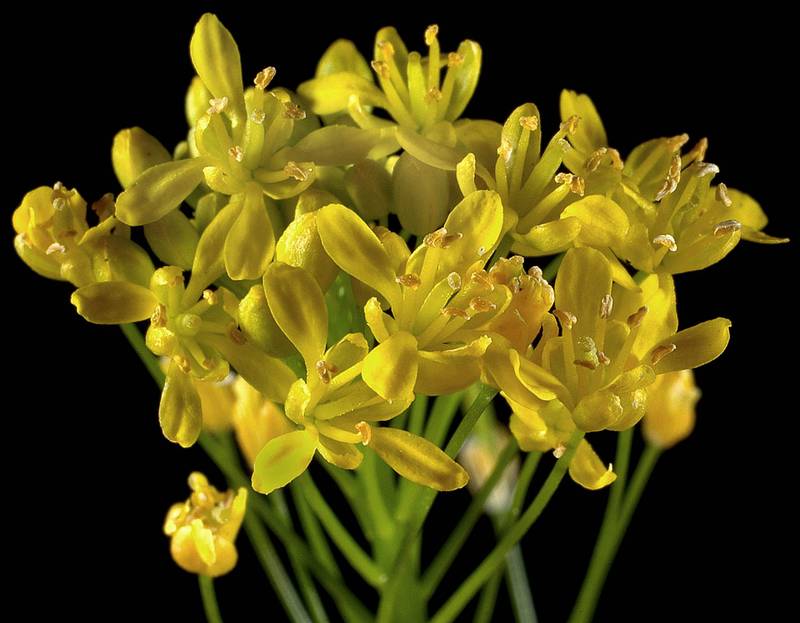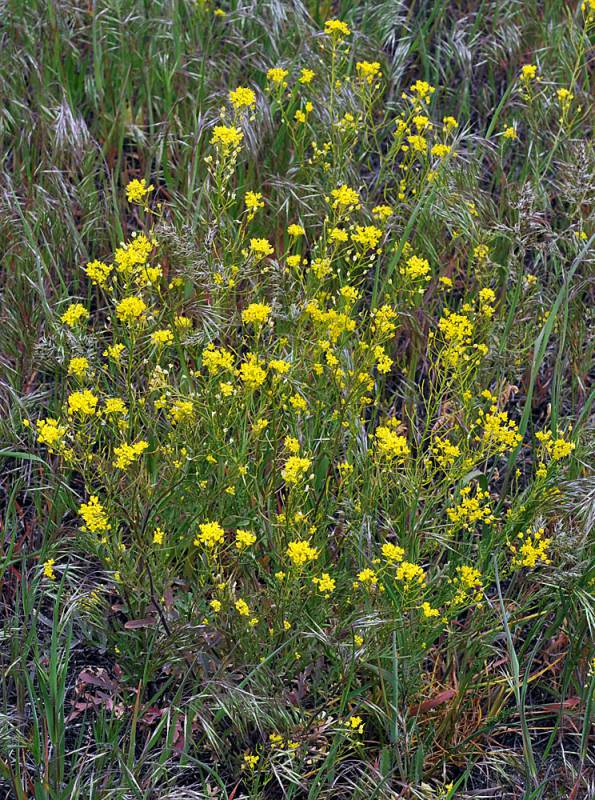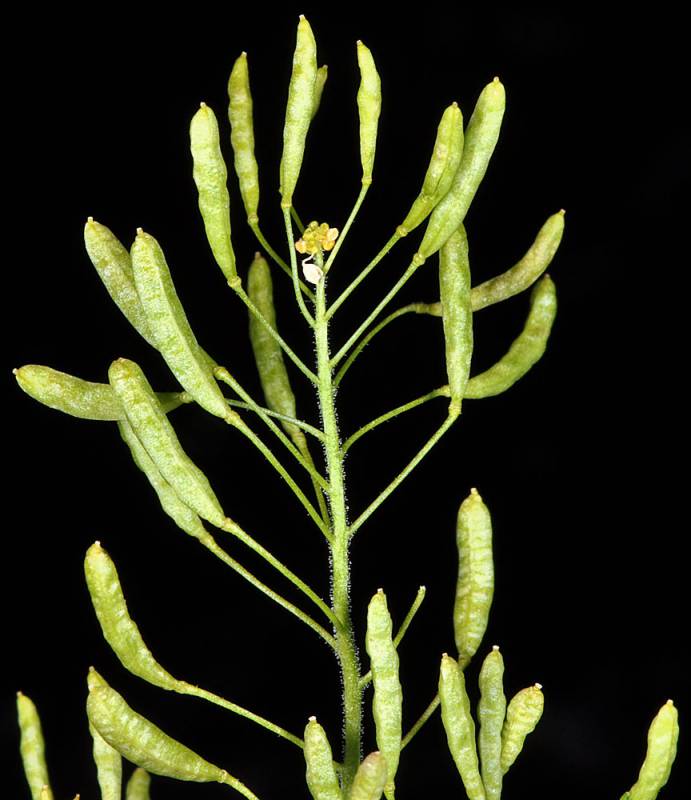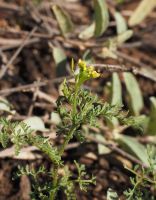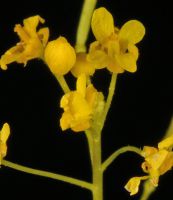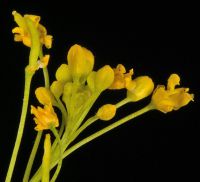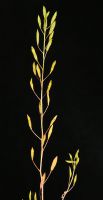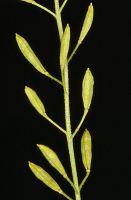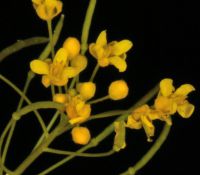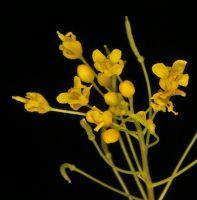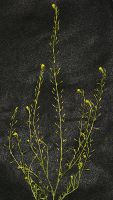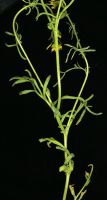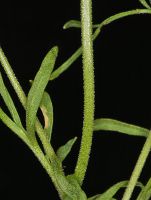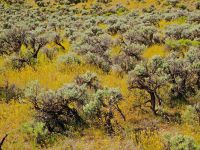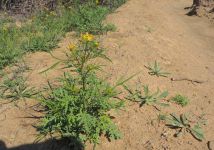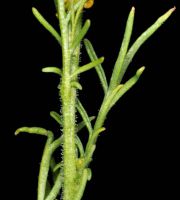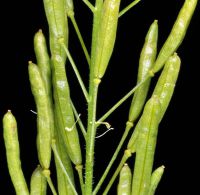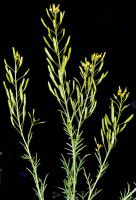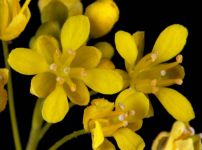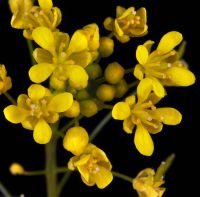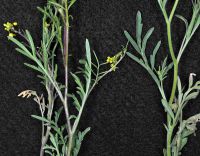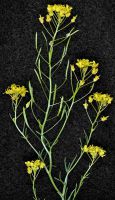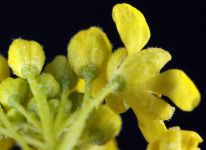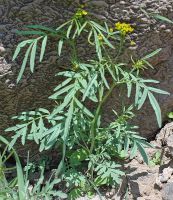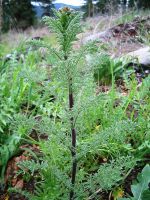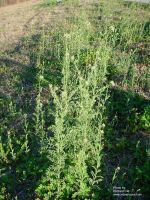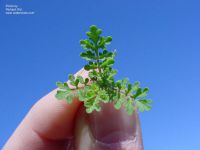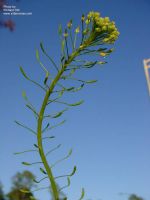Distribution: Occurring chiefly east of the Cascades crest in Washington; British Columbia to California, east across North America to the Atlantic Coast.
Habitat: Weedy native of fairly dry, open ground.
Flowers: April-July
Origin: Native
Growth Duration: Annual
Conservation Status: Not of concern
Pollination: Bees, flies
Greenish to grayish annual, finely and sometimes glandular above, the usually freely-branched stem 1-7 dm. tall.
Leaves alternate, mainly cauline, broadly lanceolate to oblanceolate, the lower petiolate, 3-10 cm. long, bipinnate-pinnatifid to pinnate-pinnatifid, somewhat toothed, the segments linear or a little broader; upper leaves reduced, usually pinnatifid into linear segments.
Inflorescence of bractless racemes; pedicles 3-18 mm. long, spreading and often bent to ascending; sepals 4, 1-2 mm. long, spreading; petals 4, pale to bright yellow, 1.5-3.5 mm. long; stamens 6; style inconspicuous.
Siliques 4-20 mm. long and about 1.5 mm. broad, narrowly elliptic in outline, rounded at the tip; seeds in 2 series at mid-length.
Publication: Mem. Torrey Bot. Club. 5: 173. 1894.
-
ssp. brachycarpa – shortpod tansymustard, western tansymustard
 Occurring chiefly east of the Cascades crest in Washington; British Columbia to California, east across North America to the Atlantic Coast.
Occurring chiefly east of the Cascades crest in Washington; British Columbia to California, east across North America to the Atlantic Coast.
PNW Herbaria: Specimen records of Descurainia pinnata in the Consortium of Pacific Northwest Herbaria database
WA Flora Checklist: Descurainia pinnata checklist entry
OregonFlora: Descurainia pinnata information
E-Flora BC: Descurainia pinnata atlas page
CalPhotos: Descurainia pinnata photos

